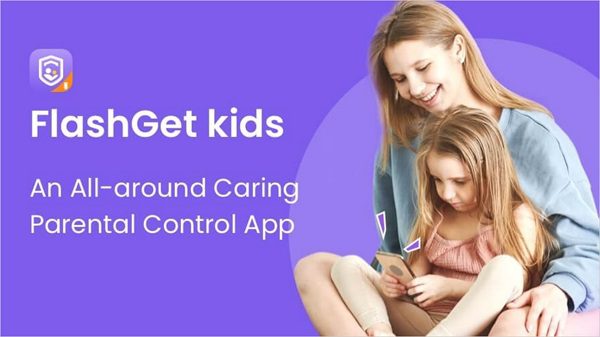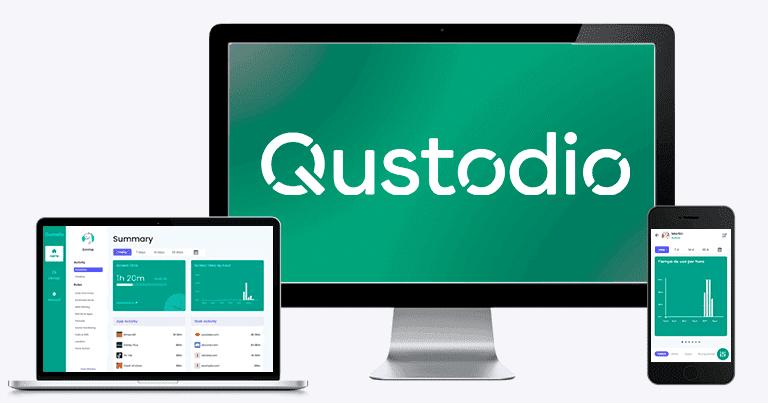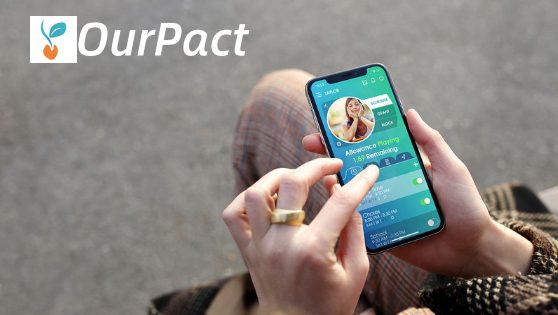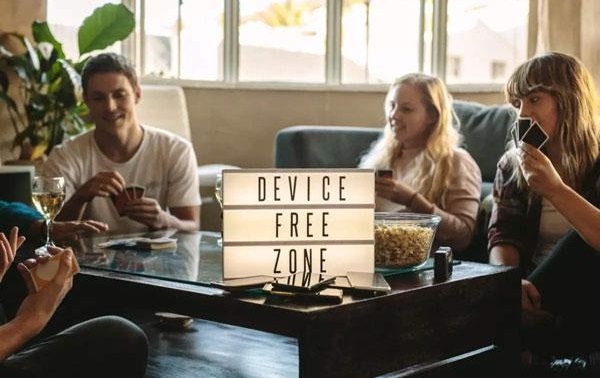While screen time limit apps are reliable tools for managing kids’ phone usage, parents shouldn’t rely solely on this forced solution because it is a strict parenting model that may affect children’s mood and behavior. Parents must focus on communication and education before applying rules and leading them by example. In this blog, we discuss some popular screen time limit apps and provide several workable and useful strategies to set boundaries for your child’s online experience beyond only using a screen time app, so keep reading!
What is screen addiction for teens?
“Screen addiction is a state in which a person makes excessive use of screen media (computers, mobile phones, TVs, tablets etc.) affecting his/her physical and mental health.”
Screen addiction for kids is a prevalent issue in today’s digital world due to the increased activities with advanced digital technology and diverse social media platforms, parts of which became worse during the COVID-19 pandemic.
The reason is that screen stimuli the brain to release a burst of dopamine (the hormone responsible for driving habits), causing people to view digital media again and again, making them addicted, similar to nicotine or cocaine users.



Physical Effects
Research shows that after the COVID-19 pandemic, the use of electronic gadgets among children, especially teens, has doubled; some of this time is productive, but they waste most of their time on social media (TikTok, Facebook, YouTube, etc.) with their eyes stuck to the screen. As a result, approximately 50% ~ 90% of them are suffering from digital eye strain and computer vision syndrome, whose symptoms include:
- Dry eyes
- Headaches
- Eyes itching
- Muscles pain
- Double vision
- Blurred vision
- Long-term eye strain may lead to permanent vision issues.
Mental Effects
Excessive screen use may also affect mental health and may lead to serious problems like
- Insomnia: If someone uses electronic gadgets before bed, the blue light from the devices reduces the production of melatonin (the hormone regulating the sleep-wake cycle), which may lead to a lack of sleepiness. Teenagers are more prone to this issue these days.
- Depression: It is the most common mental problem correlated to screen addiction. According to preventive medicine reports, this problem is more prevalent among females. Moreover, a person who spends four or more hours on screen is at higher risk of depression.
- Stress: People believe that using screen media helps them take a break from their hectic daily routine, but the reality is totally different. According to the Journal of Medical Research, people who use gadgets for fun and entertainment are 19% more exposed to emotional stress than those who use them for productive purposes.
How much screen time is healthy?
Now, let’s look at average screen time recommendations related to different age groups to minimize physical and mental issues. According to the American Academy of Child and Adolescent Psychiatry (AACAP) and the World Health Organization (WHO):
1. For babies up to 18 months old: Zero screen time, but according to the American Academy of Paediatrics if parents or family members are out of state then video chat is allowed.
2. For toddlers 18 months to 2 years: Less than 1 hour per day, which is only limited to watching more educational programs together.
3. For kids aged 2-5 years: Still less than one hour per day and less than 3 hours per weekend day. If you allow them to watch a TV show or play a game then large-sized display devices (Computers or tablets) are recommended as they cause less visual stress.
4. For kids 5-8 years old: Less than 3 hours per day on screen, limited to more educational content for their cognitive development.
5. For tweens ages 8-12: Almost 5 hours for educational purposes and less for recreational use.
6. For teenagers 13-17 years: Approximately 7.5 hours per day because of their education needs, social interactions, and entertainment purposes.
7. For adults: Just 2-3 hours spent for entertainment, and those who use computers for professional purposes around 8 hours a day are considered healthy.
However, kids under 6 age shouldn’t be given access to phones or tablets. If parents have brought these gadgets to their kids then they should consider the amount of time and type of content viewed by them to provide a healthy and safer digital environment.
Role of a screen time limit app in managing addiction
Viewing screens distracts the kids from focusing on one thing, whether it is a conversation with family, friends, or education, but by using screen time apps, parents can set a time limit, and when that limit is reached, the mobile screen will switch off.
Moreover, these software have App blockers, content filters, and spying features that allow you to identify potentially harmful content (like addictive games, adult sites, insecure chats, etc.) and then block it right away.
Similarly, by using these apps, parents can save their kids from addiction, which helps their kids grow confidence, build social skills, learn how to manage stress and have successful careers.
Therefore, if you are in search of screen time limit apps to manage screen addiction, then you have come to the right place. Here, we are going to recommend 4 amazing apps, so be with us!
FlashGet Kids
“FlashGet Kids is a third-party digital software acting as a virtual assistant of parents to keep an eye on their kids’ online activities”.



FlashGet Kids is an outstanding app for managing kids’ screen time and blocking toxic apps/games. Owing to its user-friendly interface, parents can easily create their desired schedule to limit their kids’ device usage during class or other activities to keep them focused.
Apart from this, it helps parents monitor their kids’ movements in real-time from their phones. The screen mirroring feature lets them see what their kids do on their devices. More powerful, like a remote camera, one-way audio, snapshot, etc., make FlashGet Kids a great assistance for millions of guardians.
Qustod



Qustod is a third-party, easy-to-manage parental control app for monitoring and limiting kids’ screen time. Kids spend more and more time on mobile devices, causing disturbances in the sleep-wake cycle, risks of exposure to explicit content, and many other problems. With this app, parents can easily schedule device-free time before bed and set daily phone usage limits. Moreover, you can monitor online activities like Instagram, YouTube, etc., and block games and apps containing inappropriate content.
OurPact



OurPact is a parental control app that allows parents to set rules for screen time management on their kids’ devices to provide a safer and healthier digital room. Using this app, parents not only schedule the screen time on kids’ gadgets throughout the day but also take multiple tasks from it, like
- Blocks the apps, games, or any website containing malicious content.
- Filter out the explicit results showing on Browsers.
- It helps you keep track of kids’ locations and alerts you if they leave a specific location.
FamiSafe



Famisafe is another excellent parental control app that helps parents manage kids’ screen time, track their live location, and block inappropriate websites/apps to maintain a healthy balance in their children’s lives.
More strategies for parents beyond using a screen time limit app
In this digital era, parents brought internet-based gadgets to their kids at an early age, having games, videos, and cartoons that are very appealing to kids, causing them to spend much of their time on screen. That’s why we suggest that parents shouldn’t only rely on using an app to limit screen time but should also implement different strategies to keep their kids safe.
In this section, we’ll share amazing tips to help parents manage their kids’ device screen time, so stay tuned!
Create tech-free zones and times at home



Parents must keep certain areas, such as dining tables and bedrooms, free of technology. This will allow their kids to take a break from devices and enable them to spend quality time with family members.
Be a good model
Parents are the best well-wishers of their kids, as kids are copyguides of their older ones. So, now it is parents’ responsibility to set an example by making the same rules for all ages. For instance, at dinner time, keep their phones in another room with sound off; therefore, no one will be distracted by its buzzy sound.
Encourage physical activities
As a parent, you must encourage your kids to participate in co-curricular activities like sports or outdoor games. These activities not only keep your kids physically active but also help them use digital media less.



Open communication with your child
Kids use phones or gadgets if they feel alone or find no one to communicate and play with them. As a result, they make screen media their friends or may indulge in bad things. Parents must communicate with kids and spend time with them so they may find happiness by interacting with them, not with gadgets.
Promote more offline family activities
You must schedule screen-free outings or some indoor games with family to spend quality time together, create sweet memories, help kids understand the importance of family, and create a strong bond.



Switch off the devices before bed
A good night’s sleep is necessary for staying healthy and mentally active throughout the day. That’s why parents must switch off all kids’ devices before they go to sleep, which is crucial to helping them enjoy quality sleep.
Awareness of screen addiction
You must discuss the risks and problems associated with screen addiction to restrain them from making excessive use of the screen, and now it’s up to you how you will make your kids agree to follow all set rules regarding less screen use because it requires an ongoing effort and open communication.
Final thoughts
From all the above discussion, it is concluded that although technology has made us feel comfortable and brought smiles to our faces. However, its excessive use is very dangerous for teens’ mental and physical well-being.
It is the parent’s responsibility to build a healthy and lively envoriment for kids’ growth. While limit screen time with a powerful app is effective and effortless for adults, trying to get your child to understand the essentials, such as open communication, education, or rules is the way to go once and for all. Digital technology is not going anywhere but becoming more advanced and appealing to younger minds, so parents must be responsible.

